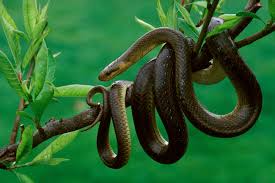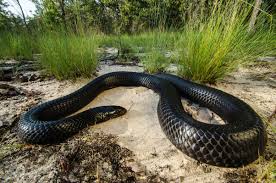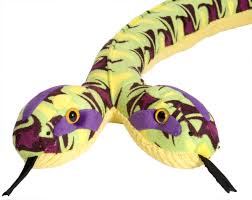A wild snake is a snake that lives in its natural habitat, free from human captivity or intervention. Wild snakes can be found in a variety of environments, including forests, grasslands, deserts, and wetlands, and they play important roles in their ecosystems as both predator and prey.
It’s important to exercise caution around wild snakes, as some species are venomous and can pose a danger to humans. If you encounter a wild snake, it’s best to keep a safe distance and avoid disturbing it. If you need to move past the snake, give it plenty of space and make noise to let it know you’re there.
Remember that snakes are generally not aggressive unless they feel threatened, so it’s best to leave them alone and allow them to go about their business in their natural environment.
Read Also: All to Know About the Wild Columbus Zoo
Brief History of the Wild Snakes

Snakes have been around for millions of years and are found on every continent except Antarctica. The history of wild snakes goes back to the earliest days of reptile evolution, with the first snake-like creatures appearing during the Cretaceous period, around 100 million years ago.
The evolution of snakes from their lizard ancestors involved a number of adaptations that enabled them to thrive in a variety of environments. One of the key adaptations was the development of elongated bodies, which allowed them to move more efficiently through narrow spaces and to capture prey with greater speed and accuracy.
Over time, different species of wild snakes evolved to fill specific ecological niches, such as tree-dwelling snakes, burrowing snakes, and aquatic snakes. Some of these species have become highly specialized, with adaptations such as venom glands, heat-sensitive pits, and prehensile tails.
Today, wild snakes play important roles in ecosystems around the world as both predators and prey. They are also important cultural symbols in many societies, with some cultures seeing snakes as powerful symbols of fertility, renewal, and transformation, while others view them as symbols of danger and evil.
Description of Wild Snakes
Wild snakes come in many different shapes, sizes, and colors, depending on the species and the environment in which they live. However, there are some general characteristics that most wild snakes share:
Body: Wild snakes have long, slender bodies that are covered in scales. Their bodies are typically divided into distinct segments, or vertebrae, which allow them to move in a wide variety of ways.
Head: Wild snakes have a distinct head that is usually wider than their neck. Their jaws are flexible and can open wide to swallow prey whole.
Eyes: Wild snakes have large, round eyes with no eyelids. Some species have specialized eyes that allow them to see in low-light conditions, while others have eyes that can detect heat.
Skin: Wild snakes’ skin is covered in scales, which can be smooth or rough depending on the species. Some species have bright, distinctive patterns, while others are more drab in color.
Limbs: Most wild snakes do not have limbs, although some species have small, rudimentary limbs that are no longer functional.
Venom: Some species of wild snakes are venomous, meaning they produce and inject venom through their fangs as a defense mechanism or to immobilize prey.
Habitat: Wild snakes can be found in a wide variety of habitats, from deserts and grasslands to forests and wetlands. They are adapted to live in their natural environments, and some species are even able to swim or climb trees.
Overall, wild snakes are fascinating and diverse creatures that have adapted to live in a variety of environments around the world. While some species can be dangerous to humans, most are harmless and play important roles in their ecosystems as both predator and prey.
Health and Lifespan of Wild Snakes

The health and lifespan of wild snakes can vary widely depending on the species, the environment, and a variety of other factors.
In general, wild snakes that are living in their natural habitat and have access to a balanced diet and clean water have the best chance of living long and healthy lives.
Some species of wild snakes have been known to live for more than 20 years in the wild, although many have shorter lifespans due to predation, disease, or other factors. The overall health of a wild snake can be assessed by factors such as their weight, body condition, and overall activity level.
Signs of poor health in wild snakes can include a lack of appetite, lethargy, abnormal behavior, and signs of injury or disease. In addition to natural factors such as predation and disease, wild snakes can also be affected by human activities such as habitat destruction, pollution, and climate change.
These factors can impact the health and lifespan of wild snakes, and it is important to take steps to protect their natural habitats and minimize human impacts on their populations.
Overall, the health and lifespan of wild snakes can be influenced by a complex set of factors, and it is important to take steps to promote their well-being and ensure their long-term survival in their natural habitats.
Read Also: Routine Activities for better Poultry Production Performance
Nutrition and Feeding of Wild Snakes
Wild snakes have a diverse range of diets that vary depending on the species and their environment. Most snakes are carnivorous, meaning they feed primarily on other animals. Some of the common prey items for wild snakes include rodents, birds, fish, insects, and other reptiles.
Different species of wild snakes have different dietary requirements and feeding strategies. Some species, such as constrictors, kill their prey by squeezing it tightly, while others, such as venomous snakes, use venom to immobilize their prey.
Due to the fact that they are cold-blooded, wild snakes have lower metabolic rates than mammals, and they can survive for long periods of time without food. Some species of wild snakes are able to go several months between meals, while others may eat multiple times per week.
One important consideration for the nutrition of wild snakes is the size of their prey. Snakes need to eat prey items that are small enough to swallow whole, and the size of the prey they eat can impact their overall health and well-being.
In the wild, snakes will typically feed on prey that is about the same size or slightly smaller than their own head. Overall, wild snakes have evolved to be highly adapted to their specific diets and feeding strategies, and their nutritional needs can vary widely depending on the species and their environment.
Providing a balanced diet that meets the nutritional needs of captive snakes is an important consideration for snake owners and those involved in snake conservation efforts.
The Wild Republic Snake

Wild Republic is a brand of toys and educational products that features a wide range of animal-themed products, including snake toys. The company produces a variety of snake toys, including plush toys, rubber toys, and other educational products that are designed to teach children about different snake species and their natural habitats.
The Wild Republic snake toys come in a variety of sizes and colors, and are designed to be both fun and educational. Some of the products feature realistic colors and patterns to help children learn about the different species of snakes, while others are more whimsical and cartoon-like in appearance.
In addition to the snake toys, Wild Republic also produces a variety of other animal-themed products, including stuffed animals, educational books, and other toys that are designed to promote a love of nature and wildlife in children.
The company is committed to using eco-friendly materials and sustainable practices in their production processes, making them a popular choice for parents who are looking for high-quality, environmentally-friendly toys for their children.
In addition, wild republic snake toys are a fun and educational way for children to learn about the diverse world of snakes and the important role they play in our ecosystem.
Read Also: Spaghetti: Nutrition, Facts and Recipes





